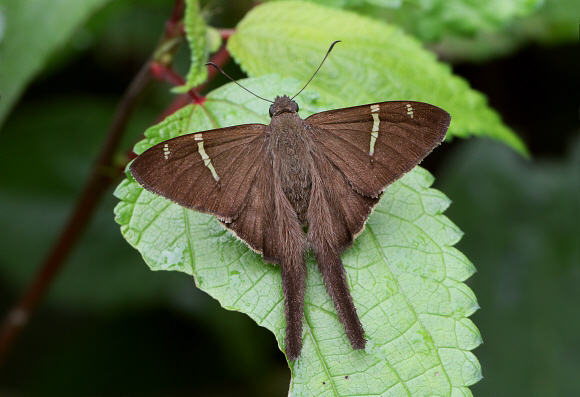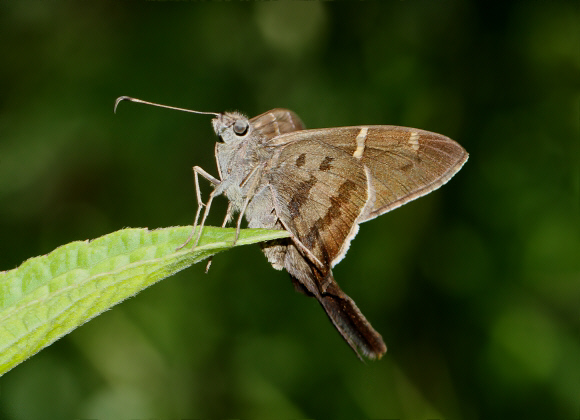
Introduction
The Pyrginae, popularly known as Flats or Spreadwings, are a cosmopolitan subfamily distributed across temperate and tropical habitats throughout the world. In the Americas there are 990 species.
The Eudamini includes 44 genera in the Americas. There are several genera of Long-tailed Skippers Urbanus, Chioides, Polythrix, Typhedanus and Aguna; which together comprise of about 95 species.
The forewings of long-tailed Skippers usually have either a thin white median band, or a pattern of diaphanous spots, the configuration of which varies according to genus and species. A feature that helps narrow down the genus is the pattern on the underside hindwings. In Aguna for example these are marked with a prominent white median band, while Chioides and Typhedanus are marbled with blackish markings. Urbanus species typically have a fairly plain underside marked with parallel dark bands, although in several species the inner band is broken up into a series of 3 or 4 large blotches.
There are 34 Urbanus species, distributed variously from Texas to Paraguay and Argentina.
Urbanus teleus is a common and widespread species, found from Mexico to Brazil and Peru.
Habitats
Like most Urbanus species this butterfly is usually associated with disturbed habitats including forest glades and clearings, roadsides and pastures, at altitudes between sea level and about 1200m.

Lifecycle
The eggs of Urbanus are typically cream or greenish in colour, barrel-shaped and have about 15 vertical ridges. They are laid in small clusters on the undersurface of leaves. The foodplants vary from species to species, but are usually either grasses or herbs in the family Leguminosae.
Adult behaviour
The butterflies are usually seen singly or in two’s and three’s. In cool or overcast conditions they bask on low foliage with wings flattened, but with the forewings overlapping the hindwings. If they are disturbed they usually resettle on nearby herbage. In hot sunny conditions the wings are held erect over the back.

